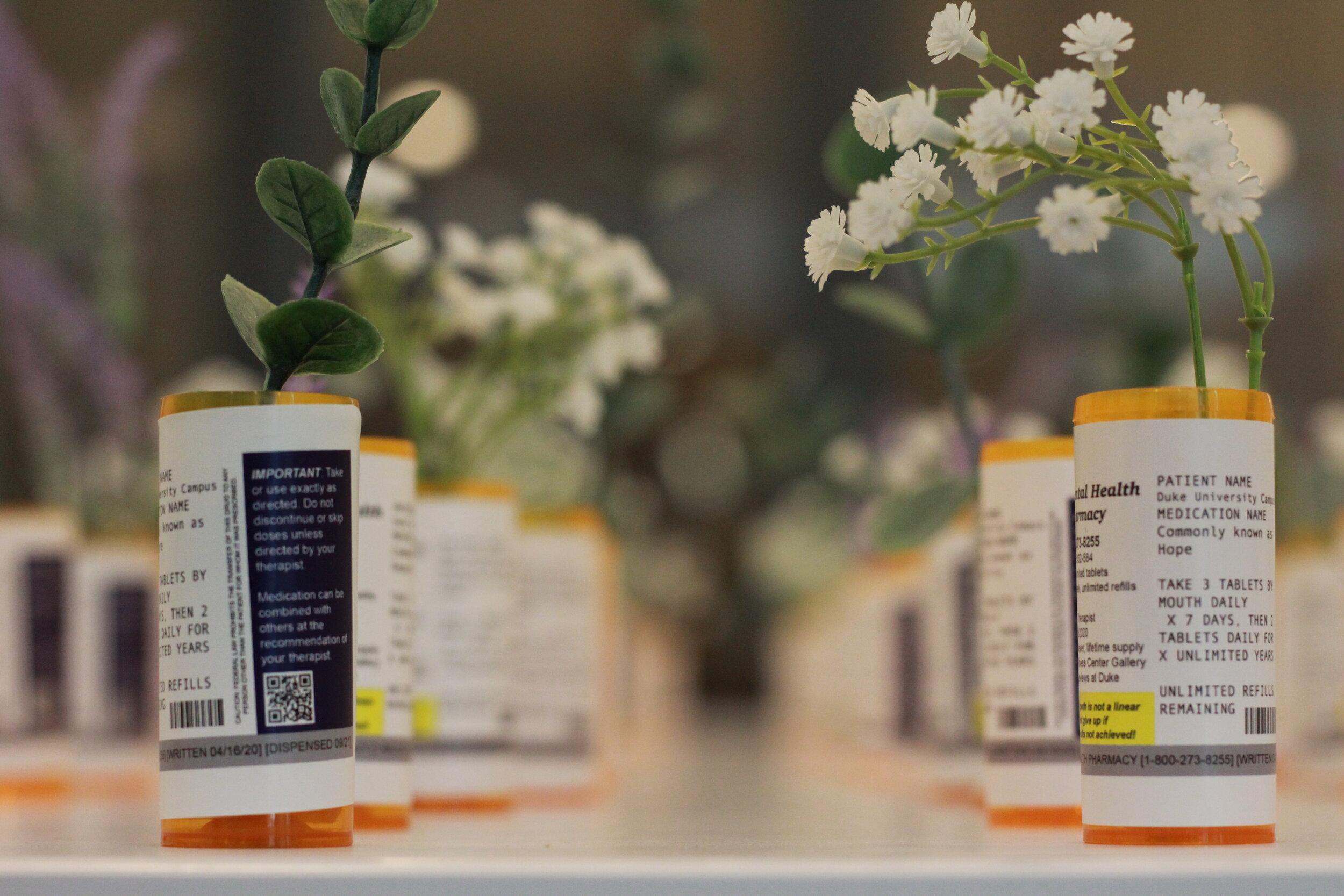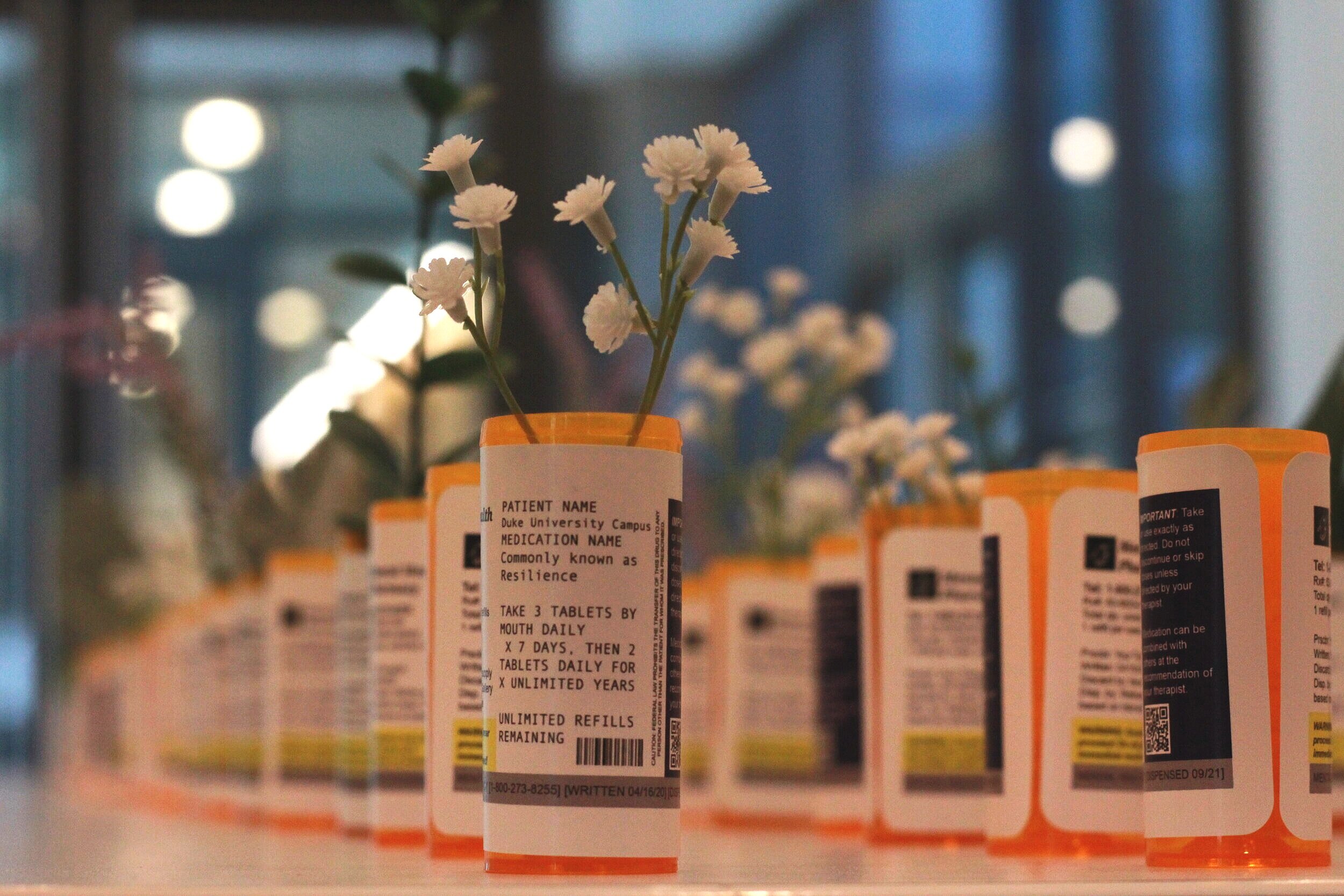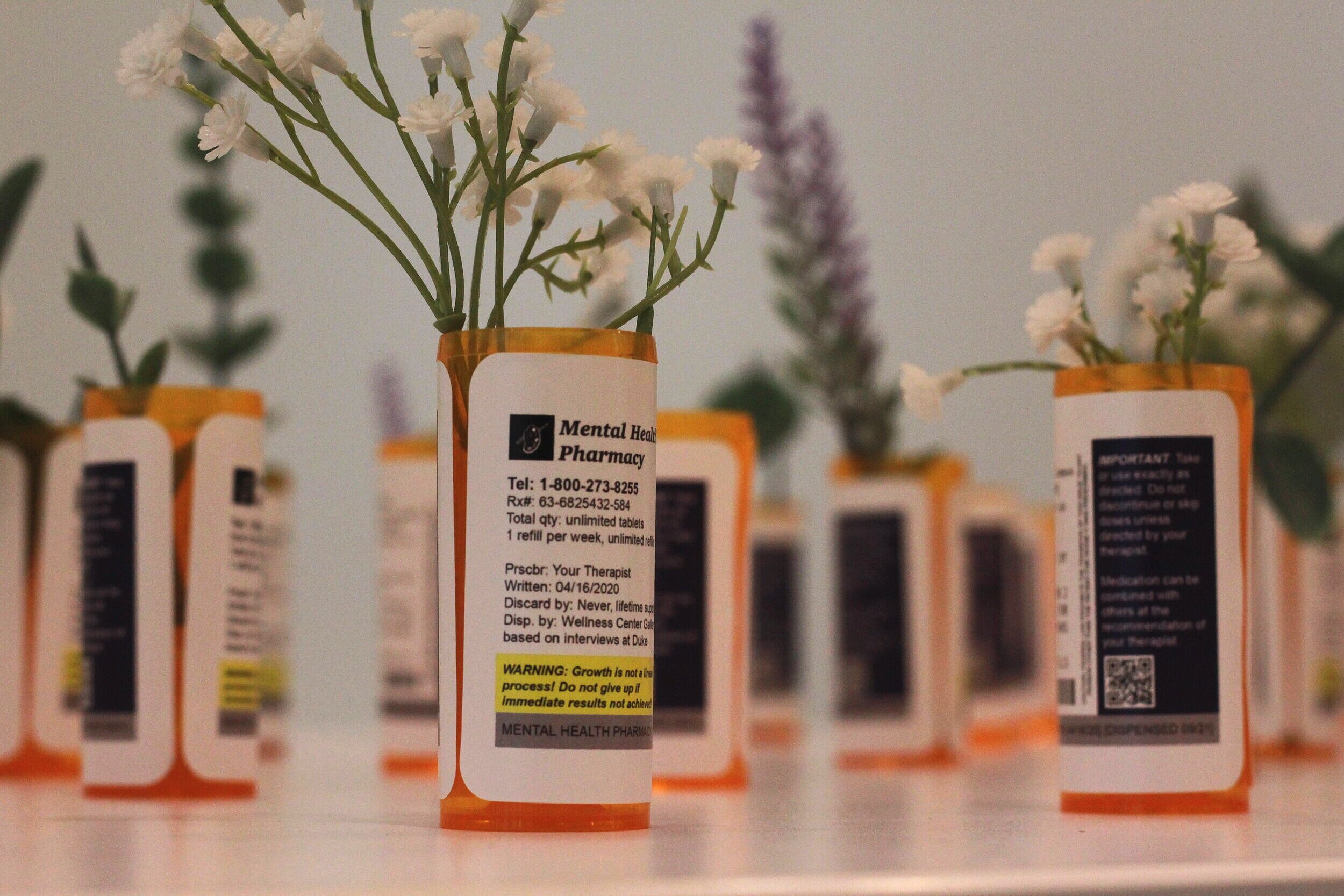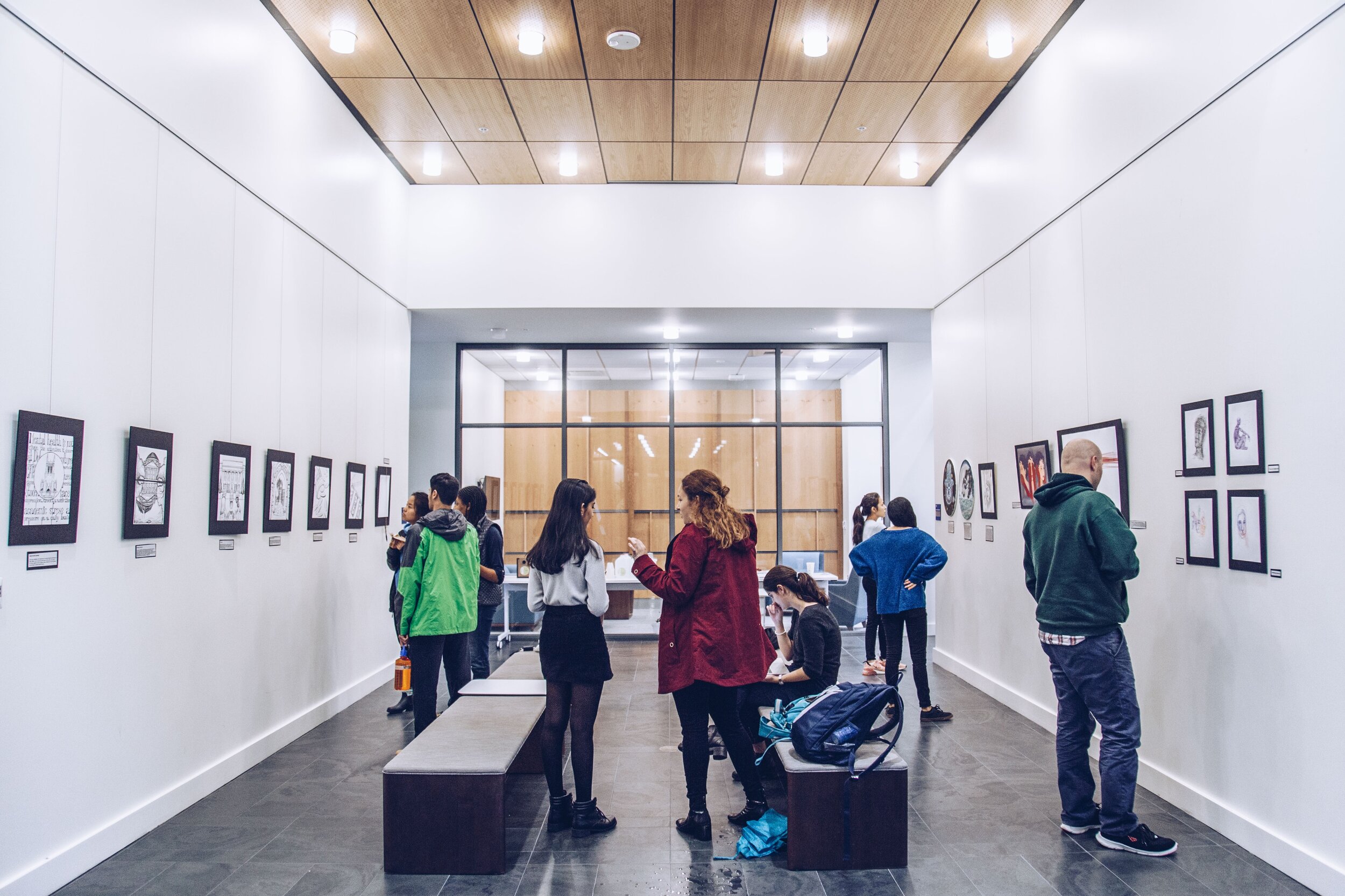REFLECT: MENTAL Health experiences at duke
project statement
While my broader work addresses health issues, I became motivated to create art on mental health in particular after watching friends suffer from mental illnesses in college. I realized how campus culture directly helped or harmed my own mental wellbeing and that of my peers. However, although many struggle with mental health, stigma and other barriers on an individual and institutional level limit access to resources. Through my artwork, I aim to raise awareness about mental health experiences, both positive and negative, especially in a Duke context. I hope my work helps the community understand mental health in a more personal and human way.
To inform my project, I conducted interviews with Duke students, staff, and healthcare professionals about their mental health journeys. These conversations provide background information and shape my project so that it can have maximum impact. I wanted to learn about the management of chronic mental health conditions, the impact of campus culture on mental health, and the challenges that patients and providers face. Common themes from these interviews directly affected the final designs of my drawings and exhibit, sharing powerful individual narratives through art.
My work is currently on display at the Duke Wellness Center Gallery, a popular space on campus frequented by students, faculty, and staff. The space is curated to merge with the healthcare environment, as the gallery is adjacent to the campus pharmacy and wellness activity rooms. My black-and-white ink drawing prints aim to raise awareness about mental health issues, prompting viewers to reflect on their own experiences by integrating text, intricate lines, and campus architecture. In the center of the room, there is an installation of flowers in pill bottle containers. Every bottle has a different “medication label,” suggesting that medication can foster different types of growth for each person.
The online version of the exhibit includes the inverted version of the prints, showing the version of the story we usually don’t see. With the dark backgrounds and white lines, the work invokes a clinical feel similar to x-rays and medical images—an ironic connection since these technologies are never used to diagnose mental health conditions. These inverted drawings will also encourage viewers to find their silver lining regarding mental health.
The exhibition shares my work and research with the larger community. It is important that my artwork has a broader social message: to depict often-invisible experiences on campus and start developing solutions. I hope this project will implore viewers to think about mental health differently. Many Duke students struggle with their mental health, and while perceptions are slowly changing, there is still stigma surrounding these issues. I aim to utilize the arts to show that mental health experiences are incredibly diverse, visually representing solutions to improve mental health and wellbeing.
PAST EXHIBITION HISTORY
Some artwork from this series was displayed at the Student Wellness Center Gallery at Duke University from November 2018 to February 2019, and at the Art of Mental Health Exhibition at the Rubenstein Arts Center at Duke University from November 2019 to January 2020. To promote the gallery, I spoke on a panel regarding my creative process and the overlap of arts and mental health. I continued artwork with this theme for my Visual Arts Graduation with Distinction Project, which was converted to an online display due to the COVID-19 pandemic. Select works were exhibited online through the Southeastern Center for Contemporary Art (SECCA) Student Showcase in spring 2020.
These works are based on a series of interviews with Duke students, staff, and mental health professionals in fall 2019 and spring 2020. I shared more about this project and my artistic process during a Virtual Artist Talk in April 2020.
Download a PDF Book of the project HERE.
hover over each image to view the inverted version

MENTAL HEALTH SPOTLIGHT
This piece highlights the importance of mental health awareness at Duke and introduces the aim of the exhibit. While a lot of work has been done in this realm, the task is far from complete— due to stigma or accessibility barriers, many students are still hesitant to get help for mental health issues.

EFFORTLESS PERFECTION
The idea of effortless perfection has pervaded Duke culture for years, describing how people downplay the effort needed to maintain their grades, pursue the best internships, and keep up with a busy social life. We show a perfect, unblemished exterior to the outside world even if everything is falling apart.

HIDDEN COSTS
Many enter college already concerned about the financial impact their education will have on their families. To make things worse, hidden costs appear that students didn’t account for, ranging from social expenses to expensive textbooks.

ONLY ONE PATH TO SUCCESS?
Wide-eyed first-years enter Duke with diverse interests, excited by the seemingly limitless academic possibilities. Once junior and senior year rolls around, several students feel trapped, as if they don’t have as many options anymore.

OVERLOADED
College students often take on busy schedules, trying to fit in advanced courses, time-consuming extracurriculars, and leadership positions. This can cause academic stress and limit time for self-care and relaxation.

BARRIERS TO SUCCESS
Particularly evident among first-year students, several barriers can prevent students from achieving success and finding a sense of belonging. A culture of exclusivity, with competitive processes for clubs and social groups, leads to many students facing rejection just as they begin college.

PROUD WINNER
Several interviewees mentioned competitiveness with regards to poor self-care. Many students proudly announce their lack of sleep or argue that their academic schedule is the most difficult.

PRESCRIPTIONS FOR DUKE
Students here face stress and pressure from almost every area of their lives – what is the solution? We need more self-care, tolerance, inclusion, and compassion to tackle mental health issues. I am hopeful that this exhibit is a step in the right direction.
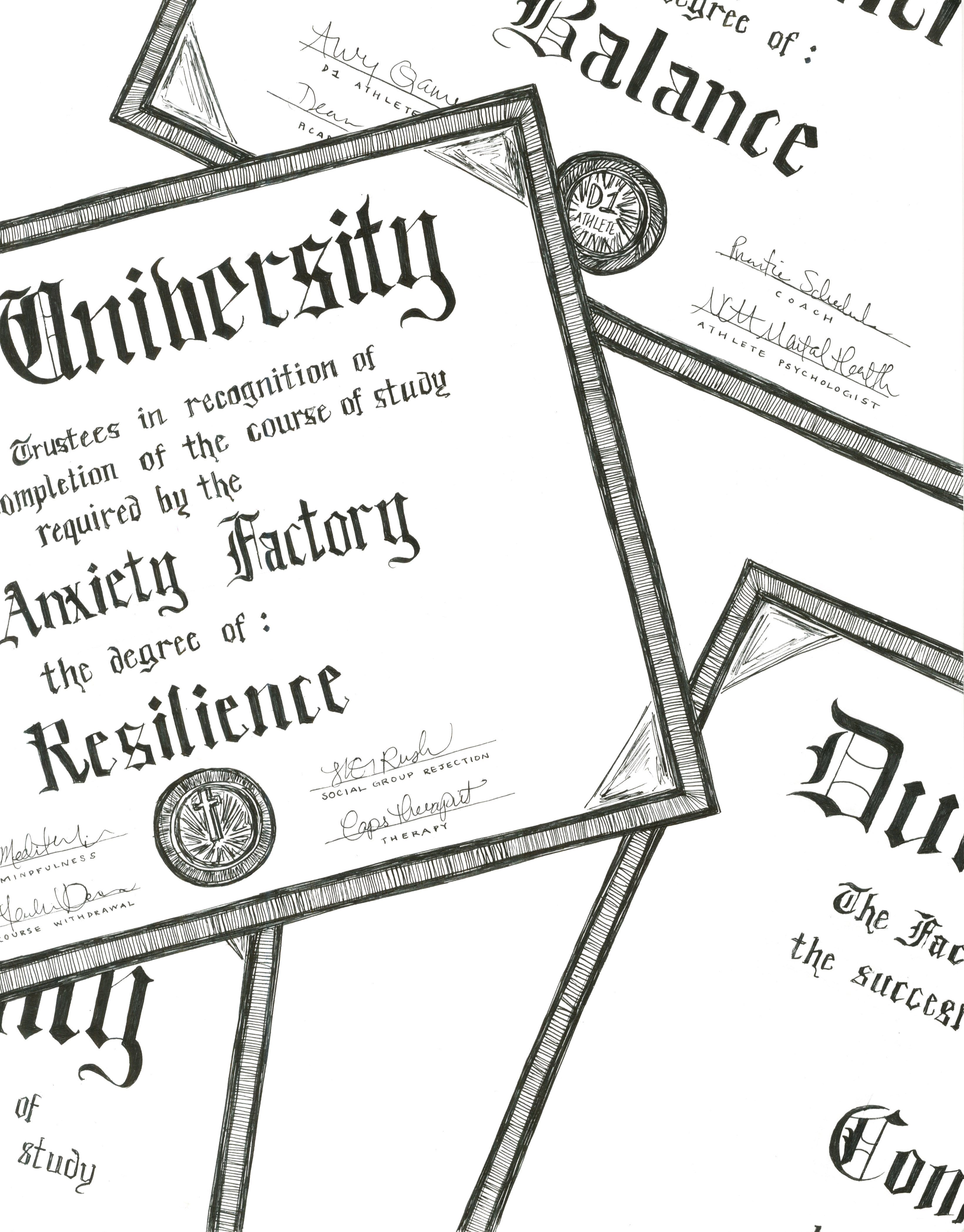
REAL DIPLOMAS
In one of my interviews, a mental health professional described Duke and other elite colleges as “anxiety factories,” with high-achieving students feeling pressured to succeed. I combined this idea with diplomas, highlighting what some may learn in college instead of an academic degree.

RECOVERY BLOOMS
Inspired by one of my interviewees who spoke about how medication improved her severe depression, this drawing symbolizes recovery as flowers growing out of pill bottles. Each blossom is a different height, indicating that every recovery process is unique.

ALCOHOL CULTURE
These four drawings highlight issues of substance abuse on college campuses, with hidden words associated with drinking culture. in the final exhibit, they will be printed on coasters.

YOU ARE NOT ALONE
The distinctive Gothic windows at Duke provide an opportunity for students to decorate or spell out words on the squares. I utilized this concept to represent a simple but powerful message, one which is also echoed through the exhibit as a whole.
pill bottle flowers installation
The exhibit included a large installation of flowers growing out of pill bottles, each blossom a different height to indicate that growth and recovery look different for everyone.
Pill Bottle Flowers Installation
exhibit coasters
These coasters, with hidden words associated with drinking culture and alcohol use, will decorate the coffee tables in the exhibit.
PUBLISHED ARTWORK FROM THIS SERIES
During the COVID-19 pandemic, I created three more artworks which highlight the impact of COVID-19 on mental health. These pieces were published as a Graphic Narrative in the peer-reviewed journal Annals of Internal Medicine, and will be included in the in-person exhibition.
My drawings, Recovery Blooms, were published in the Spring 2021 edition of Intima, A Journal of Narrative Medicine at Columbia University.
My photograph, Recovery Blooms in Color, is included in the online Bedside Education in the Art of Medicine (BEAM) Collection at Johns Hopkins School of Medicine.
My drawing inspired by the art installation, Prescriptions for Healing, was published in Annals of Internal Medicine.
EXHIBITED
september - december 2021
The work was displayed during Duke University’s Class of 2020 Commencement Weekend.


